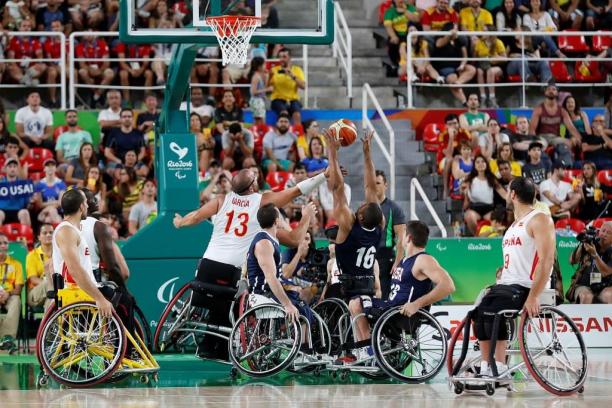Wheelchair Basketball

Wheelchair Basketball
Wheelchair basketball first emerged around 1946 in the USA, developed by injured servicemen from World War II. Most were former able-bodied players who wanted to continue playing the game. The simple adaptations and slight rule variations for people in wheelchairs allowed the sport to spread across the US, and eventually worldwide.
The object of the game is to score the most points in the opposing team’s basket. The team with the most points by the time the clock expires wins. As the name suggests, wheelchair basketball is an adaptation of the able-bodied version.
The International Wheelchair Basketball Federation (IWBF) is the global governing body of the sport.
Rule: Wheelchair basketball; able-bodied basketball
Court dimensions: 28m x 15m; same
Basket height: 10ft; same
Players on the court: Five from each team, total of all classification points cannot exceed 14; five on each team
Playing time: Four quarters of 10 minutes each; same
Shot clock: 24 seconds; same
Scoring: One point per free throw; same
Two points per field basket; same
Three points for a shot made behind the arc of the 3-point line; same
3-point line: 6.75m; same
Dribbling: A wheelchair basketball player takes one or two pushes while the ball is either resting on his or her lap or held in his or her hand, followed by dribbling the ball, and this sequence may be repeated as often as the player wishes
Travel violation: Called when player in possession pushes more than twice without dribbling
Fouls: An infraction of the rules concerning illegal personal contact with an opponent - the wheelchair is considered a part of the player
These are just a few comparisons between the two versions of basketball.
History of wheelchair basketball.
Classification in wheelchair basketball.
Watch Paralympic Sports A-Z: Wheelchair Basketball video.
| Type of data | Info data |
|---|---|
| © | |
| Address | c/o FIBA, Route Suisse 5, PO Box 29, 1295 Mies, Switzerland |
| Phone | +41 22 545 00 00 |
| info@iwbf.org | |
| Website | http://www.iwbf.org/ |
| Main Contact | Norbert Kucera |














